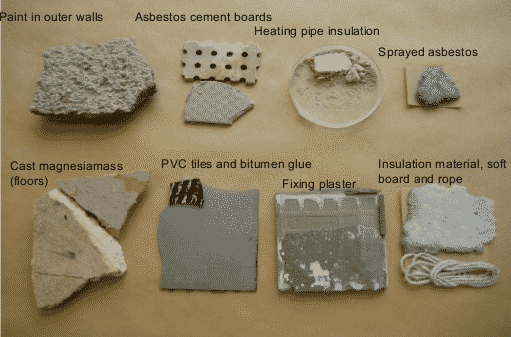Whether you’re looking to buy or renovate an older home, you could be up against a few hidden asbestos problems that aren’t usually a concern in newer homes. That’s because asbestos-containing materials (ACMs) were popularly used in homes built before 1980. Although asbestos is an effective and flame-resistant insulator, it is, unfortunately, a serious health hazard.
Before you commit to buying that charming older home you love or beginning a reno project, you’ll want to have your home tested for asbestos in materials like these.
1. Insulation (ACMs)
Before we knew just how hazardous asbestos exposure could be, this material was the primary type of insulation used in homes, schools, and other buildings built before 1980. As long as they are left undisturbed, though, existing ACMs are not believed to pose a health risk. However, if you plan to renovate an older home, you’ll want to hire professional asbestos testing and asbestos abatement companies to detect and remove the problem first.
2. Textured Ceiling Tiles (ACMs)
Also called “popcorn” or “cottage cheese” ceilings, textured ceilings often contain asbestos. This unique look used to be in style, but because many homeowners now want an updated look, ACMs lurking in textured ceiling tiles could pose a health risk if not tested and properly remediated first.
3. Vinyl Floors (ACMs)
Some vinyl flooring backing and adhesives might also contain asbestos. Before redoing the floors in an older home, it’s a good idea to have a certified asbestos inspector come in and make sure it’s safe to tear up the old floors and give them a fresh new look.
4. Hot Water and Steam Pipes (ACMs)
Since asbestos was so widely used as an insulator, some older hot water, and steam pipes could also contain traces of this dangerous material.
5. Oil and Coal Furnaces (ACMs)
Similarly, oil and coal furnaces could still have their original asbestos insulation. If you plan on ripping yours out and replacing it with a newer furnace, call in an asbestos inspector first.
6. Roofing and Shingles (ACMs)
Some roofing and siding shingles used to be made with what’s called asbestos cement, which is essentially a mixture of asbestos and regular cement. You might also find this material in corrugated roofing and drain pipes.
Some types of asbestos, particularly white asbestos or chrysotile, were banned much later than other types, so buildings as new as 1999 could contain asbestos cement.
7. Walls and Floors around Wood Burners (ACMs)
Wood burners can be an efficient way to heat your home in the winter, especially if natural gas isn’t available where you live. But if there are older cement sheets or millboard surrounding your wood burner, you could have a hidden asbestos problem on your hands.
How Do I Find an Asbestos Testing Laboratory Near Me?
If you think your older home might contain asbestos and you’re planning to renovate, it’s important that you find a reputable asbestos testing laboratory in your area to ensure your family’s safety. Look for a full-accredited environmental laboratory that has experienced professionals who know, understand, and follow the highest safety standards when testing for asbestos.
Feel free to give IRIS Environmental Laboratories a call today at 1(800) 908-6679, or contact us online for more information on how to get started with your asbestos inspection.

